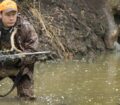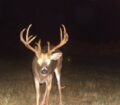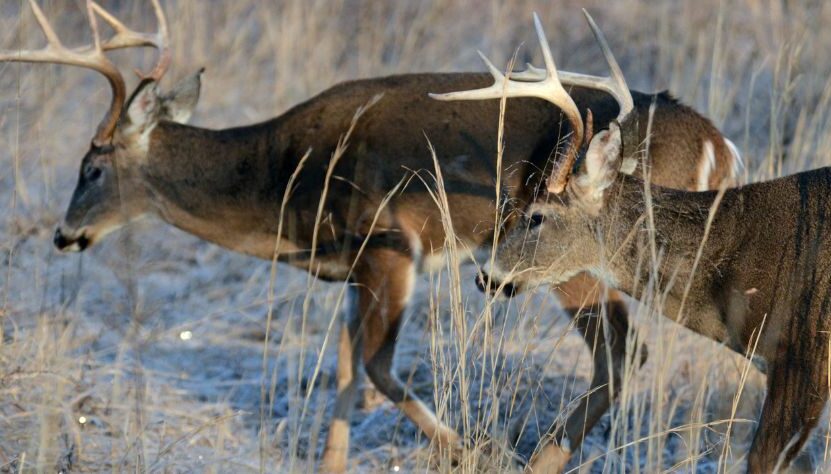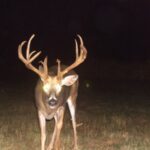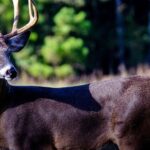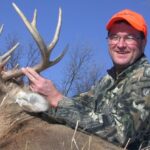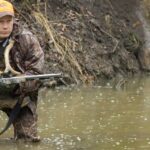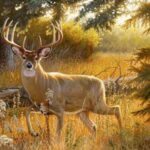Editor’s Note: If you’re still ready to hunt deer, hunters all across the U.S. have learned that they can be successful in taking big bucks in February in the South. You’ll have to study each state’s regulations in Alabama, Florida, Mississippi, Texas, and Virginia to learn when deer season ends—generally around February 10th. The rut is still taking place at the end of January and in February in many sections of the South. If you don’t have a place to hunt, check out some of the fine hunting lodge operations available or look at public lands in each state and their regulations. Although February deer are primarily nocturnal, you can find them and possibly take your best deer of the year.
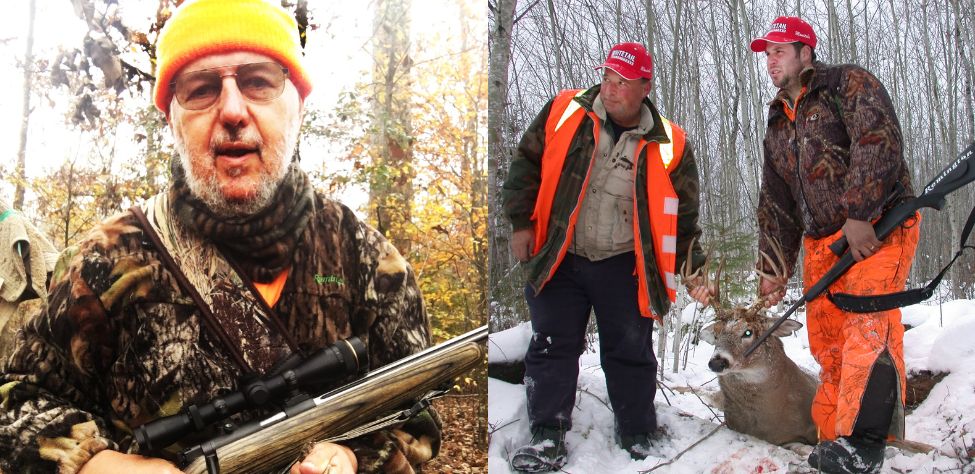
Twenty years of research, including 35,000 hunter days and statistics from the National Weather Service about the weather conditions on both morning and afternoon hunts, can teach us information about when deer move. Dr. Robert Sheppard of Tuscaloosa, Alabama, with the help of the hunters and the staff at Bent Creek Lodge in Jachin, Alabama, has gathered dramatic information that will change many of our beliefs about when deer move and what’s the best time to hunt a big buck.
According to Dr. Sheppard, “Our research from hunters on deer sightings and deer harvest over 20 years with hunters hunting mornings and afternoons was merged with the National Weather Service data on weather conditions for each day these hunters hunted. Once we had the data, we then began to look at the weather conditions that caused deer to move, be seen, and be harvested. We wanted to know what kind of weather conditions optimized the likelihood of big deer getting up out of their beds and walking around, so hunters could take them during daylight hours. We were surprised by some of the data and what we learned.
- “The most important factor that increases the likelihood of deer moving in daylight hours is temperature. The colder the weather is, the better your odds are of seeing deer.
- “The amount of cloud cover or the lack of cloud cover is the second most important factor impacting deer movement. Rainy weather isn’t particularly good, although some hunters swear that hunting deer in the rain is better. Cloudy skies are somewhat better for spotting deer movement. A clear sky is the best day to hunt, particularly on bright, clear, cold days.
- “The third factor impacting deer movement was wind velocity. I initially thought a calm day with no wind or wind speeds of 12–15 miles per hour wouldn’t cause deer movement. I assumed really strong winds with possible wind speeds of 30 to 40 mph wouldn’t be good days to hunt. But statistics showed that the harder and faster the wind blew, the more deer sightings and deer kills we recorded.”
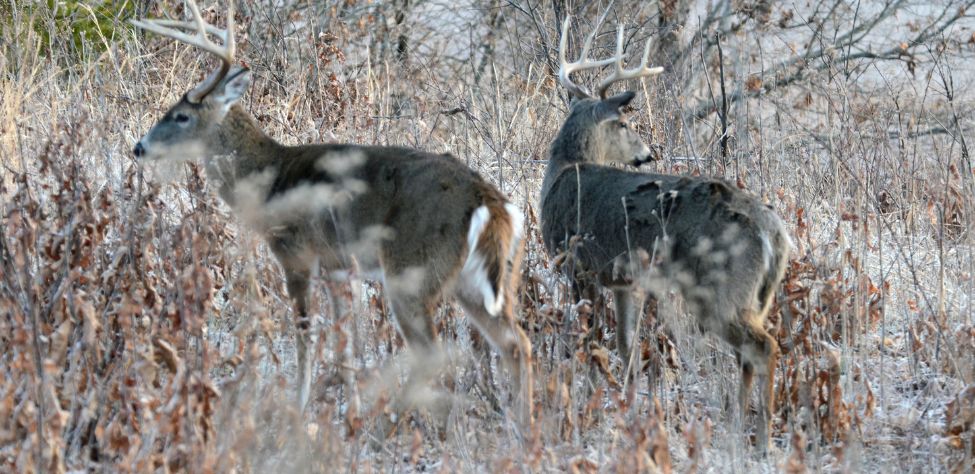
What’s the Ideal Day for Hunting February Deer?
An ideal day for hunting deer will be a cold day with clear skies and high wind velocities. You’ll need a close shot so you won’t experience arrow or bullet drift in a hard, blowing wind.
According to deer-hunting instructor Dr. Robert Sheppard, who gathered the information on hunting deer in January and February (see Day 1): “On:
- “On cold days, deer need more food than on other days and may stay warmer by walking.
- “On clear, windy days, deer can’t hear sounds in the woods as well as on still, quiet days.
- “Clear days with plenty of sunshine help deer spot approaching predators better than on cloudy, overcast, or rainy days.”
But as Dr. Sheppard emphasizes, “These are just my opinions.”
Looking for more content? Check out our YouTube channel and watch “Hunting Before the Storm with Bob Sheppard” by John E. Phillips.

How to Hunt and Take Big Buck Deer on Small Properties
In this book, you’ll hear from 14 hunters who either have gained permission or leased properties as small as six acres to as much as 250 acres, and how they consistently take older-age-class bucks off these little lands.
VERSIONS: AUDIBLE, KINDLE & PRINT

Jim Crumley’s Secrets of Bowhunting Deer
Using a black magic marker and a gray work jumpsuit, Jim Crumley of Buchanan, Virginia, drastically changed the nature and purpose of hunting camouflage when he created the first sportsman’s camouflage – Trebark. Crumley’s love of bowhunting and his desire to be more invisible changed hunting clothing forever.
In this hunting guide, he shares the wisdom that he’s learned throughout his lifetime about how to be a hunter, how to find a deer lease, how to scout for deer, and more.
Special features include how to:
- Have a magic 60 acres to hunt
- Decide the best equipment to use
- Find deer year-round
- Locate land to hunt
- Know the best place to put your tree stand
- Get bucks within bow range
VERSIONS: AUDIBLE, KINDLE & PRINT

How to Hunt Deer Like a Pro
How do you know if the land you hunt has a trophy deer on it? Wildlife manager Bob Zaiglin, of Uvalde, Texas and Jim Crumley, the father of modern-day hunting camouflage, tells you how to find out. GPS can make finding and taking that trophy buck easier. This hunting guide will teach you how to hunt big bucks where no one else can find them, how to call deer, and how to become versatile as a deer hunter, so that if one deer tactic doesn’t work, another one will.
In the chapter, “How to find Bucks at Scrape,” Dr. Keith Causey, retired professor of Wildlife Science at Auburn University, describes the best way to hunt a scrape.
Brad Harrison of Neosho, Missouri, is a nationally-known videographer, professional deer hunter and master at calling deer. Another master is Will Primos of Primos Game Calls. These two experts will tell the best deer calls and when to use them in this book.
And for over 20 years, Bo Pitman, lodge manager of White Oak Plantation, has been studying deer movement patterns. He explains what types of conditions are best for predicting deer movement.
VERSIONS: AUDIBLE, KINDLE & PRINT

Deer hunting and deer hunters are drastically changing each year. To learn new techniques for hunting deer and have more places to hunt, I’ve interviewed some of the best deer hunters in the nation and share their tactics in How to Hunt Deer Like a Pro: Volume II.
In Chapter 10, Jacob Lamar tells you his tactics for consistently taking older-age-class bucks on public lands in several states. Chapter 11, Bob Walker explains how to find places on public lands where you can hunt that 99 percent of the other hunters never have considered hunting. The Bonus Chapter with David Ramey tells you how, where, when and with what equipment to take big Kansas bucks on public lands by hunting in 100-degree weather when others won’t hunt.
Chapter 13, Mark Drury, his family and his guests take mature bucks every season by having more small places to hunt rather than one large property. Drury explains the strategy of having satellite farms to hunt that only may be 50-150 acres each or less. Chapter 15, Pat Reeve, who hunts far-northern states and Canada, says, “I don’t like hunting for mature bucks until the weather is 20 degrees or less.” Chapter 4, Dr. Larry Marchinton says that funnels are the most-reliable stand sites to hunt for big bucks and tells why.
VERSIONS: AUDIBLE & PRINT
Tomorrow: Moon Phase Affects February Deer Movement

